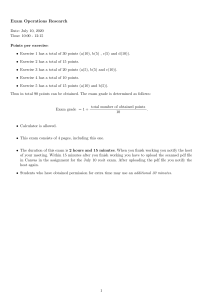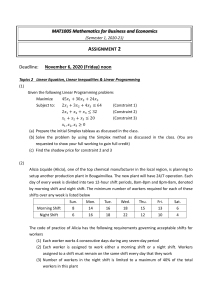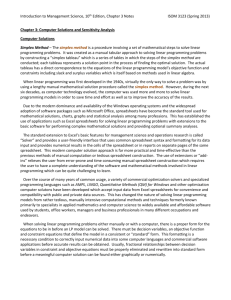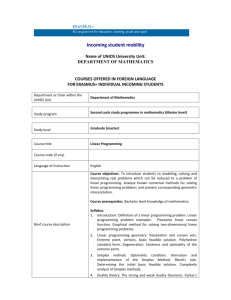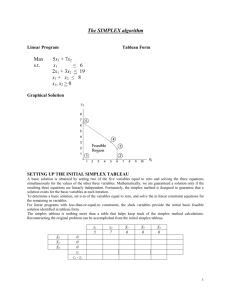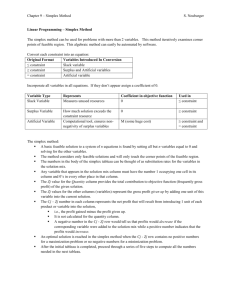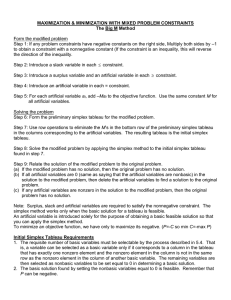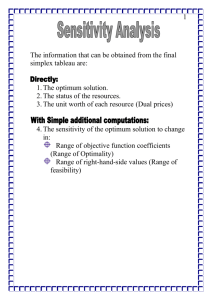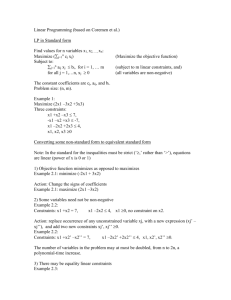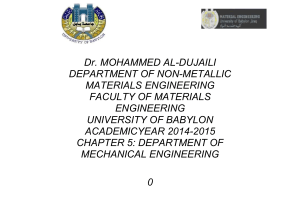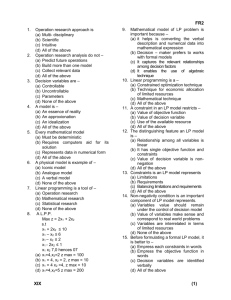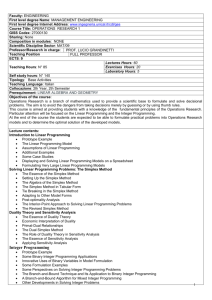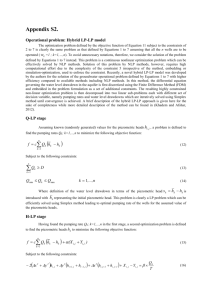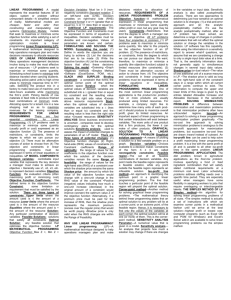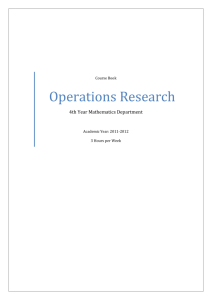1 - Binus Repository
advertisement
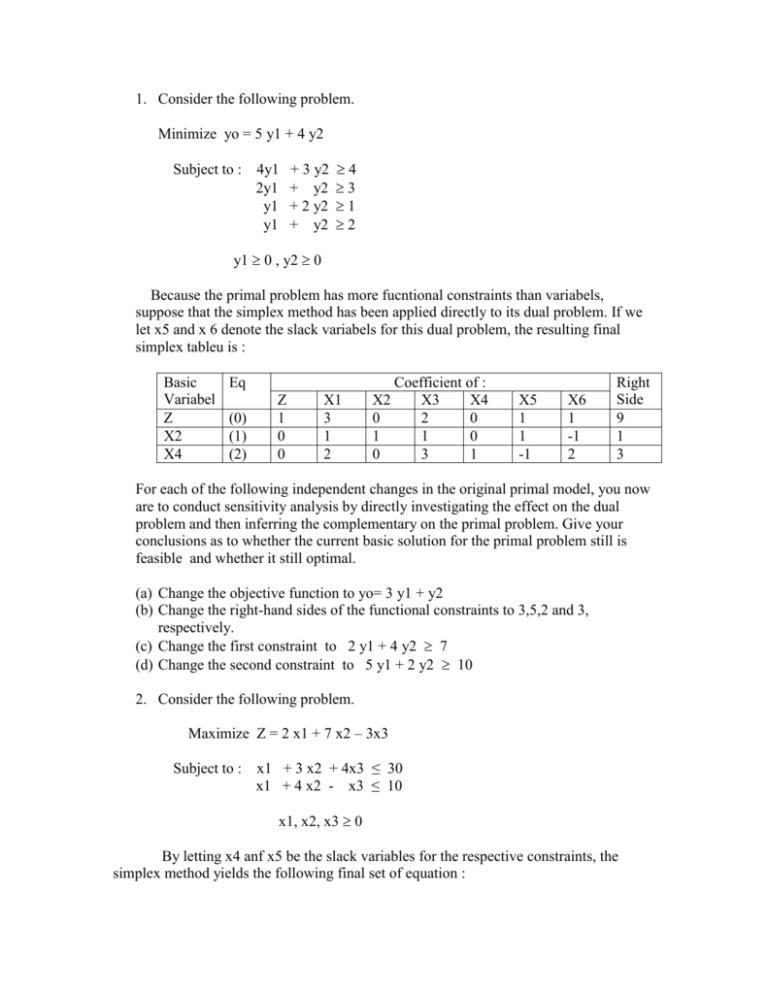
1. Consider the following problem. Minimize yo = 5 y1 + 4 y2 Subject to : 4y1 2y1 y1 y1 + 3 y2 + y2 + 2 y2 + y2 4 3 1 2 y1 0 , y2 0 Because the primal problem has more fucntional constraints than variabels, suppose that the simplex method has been applied directly to its dual problem. If we let x5 and x 6 denote the slack variabels for this dual problem, the resulting final simplex tableu is : Basic Variabel Z X2 X4 Eq (0) (1) (2) Z 1 0 0 X1 3 1 2 X2 0 1 0 Coefficient of : X3 X4 2 0 1 0 3 1 X5 1 1 -1 X6 1 -1 2 Right Side 9 1 3 For each of the following independent changes in the original primal model, you now are to conduct sensitivity analysis by directly investigating the effect on the dual problem and then inferring the complementary on the primal problem. Give your conclusions as to whether the current basic solution for the primal problem still is feasible and whether it still optimal. (a) Change the objective function to yo= 3 y1 + y2 (b) Change the right-hand sides of the functional constraints to 3,5,2 and 3, respectively. (c) Change the first constraint to 2 y1 + 4 y2 7 (d) Change the second constraint to 5 y1 + 2 y2 10 2. Consider the following problem. Maximize Z = 2 x1 + 7 x2 – 3x3 Subject to : x1 + 3 x2 + 4x3 ≤ 30 x1 + 4 x2 - x3 ≤ 10 x1, x2, x3 0 By letting x4 anf x5 be the slack variables for the respective constraints, the simplex method yields the following final set of equation : (0) Z + x2 + x3 + 2x5 = 20 (1) - x2 + 5x3 + x4 - x5 = 20 (2) x1 + 4x2 - x3 + x5 = 10 Now you are to conduct sensitivity analysis by independently investigating each of the following seven changes in the origina model. For each change, use the sensitivity analysis procedure to revise this set of equations ( in tableau form) and convert it to proper form from Gaussian elimination for indentifying ang evaluating the current basic solution. Then test this solution for feasibility and for optimality. If either test fails, reoptimize to find a new optimal solution. (a) Change the right-hand sides to b1 20 b2 30 (b) Change the coefficients of x3 to c 3 2 a 3 13 a23 2 (c) Change the coefficients of x1 to c1 4 a 3 11 a21 2 (d) Introduce a new variable x6 with coefficients c6 3 a 1 16 a26 2 (e) Change the objective function to Z = x1 + 5 x2 – 2 x3 (f) Intoduce a new constraint 3 x1 + 2 x2 + 3 x3 ≤ 25 (g) Change constraint 2 to x1 + 2 x2 + 2 x3 ≤ 35 3) Consider the following problem. Maximize Z = 3 x1 + x2 + 2x3 Subject to : x1 - x2 + 2x3 ≤ 20 2x1 + x2 - x3 ≤ 10 x1, x2, x3 0 Let x4 and x5 denote the slack variables for the representative functional constraints. After we apply the simplex method, the final simplex tableau is Basic Eq Variabel Z X3 X2 (0) (1) (2) Coefficient of : Z 1 0 0 X1 8 3 5 X2 0 0 1 X3 0 1 0 Right Side X4 3 1 1 X5 4 1 2 100 30 40 (A) Perform sensitivity analysis to determine which of the 11 parameters of the models are sensitive parameters in the sense that any change in just that parameter’s value will change the optimal solution. (B) Find the allowable range to stay optimal for each cj (C) Find the allowable range to stay feasible for each bi
